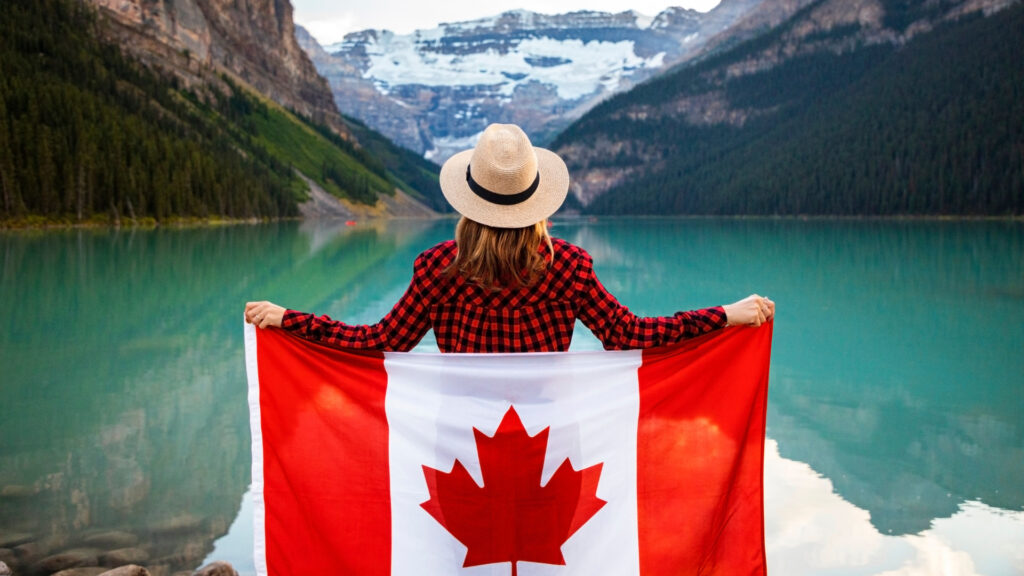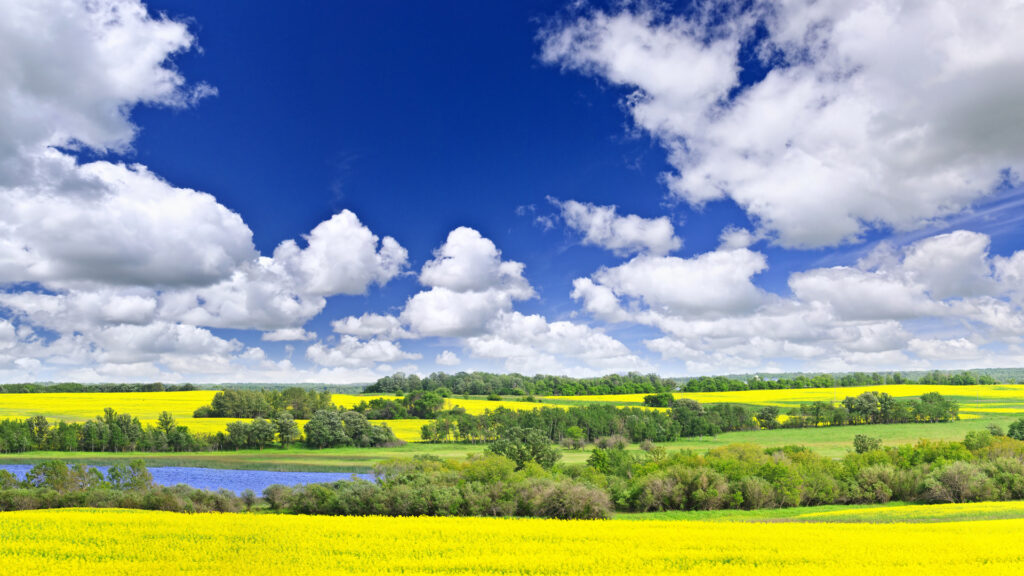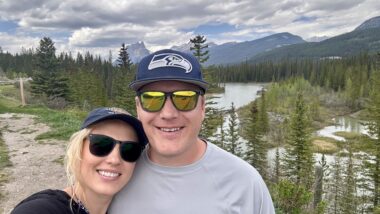Table of Contents Show
If you want to take a trip to Canada in the future, you may need to learn a few things.
Luckily, a new language isn’t one of them if you speak English. However, while you won’t need a translator, brushing up on some Canadian slang can help.
Since slang is often region-specific, it’s no surprise that our friends to the north have some terms they use. Knowing a few of the most common words can help you avoid confusion.
Today, we’ll look at some of the most common slang used by Canadians. If you use them now and then, you’ll fit right in during your adventure.
What Is Canadian Slang?
Canadian slang is the vocabulary and jargon used throughout Canada. These unique terms get commonly used in everyday language. Deciphering their meaning can sometimes be confusing since they’re specific to the region or country.
For example, if you heard someone use the term “rink rat,” you may think they need to call a pest control company. However, the term refers to someone who spends much time at the ice rink. Canadians love hockey. So people may frequently head to the rink to play and watch the sport.
Need another example? The winters in Canada can be brutally cold. To stay warm, people must wear thick, heavy winter coats. In the United States, we often call these types of coats “parkas.” However, Canadians have a more fun term and call them “parkies.”
Need some more examples? Don’t worry! We’ll share plenty more later on.

Do Canadians Really Say ‘Eh’?
A famous piece of Canadian slang is the term ‘eh.’ You often see or hear this term used overly dramatically in entertainment as a stereotype. But do they actually use it?
We can confirm that the stereotype is 100% accurate. While Canadians may not use it as frequently as entertainment portrays, it is common. It often gets used as an interjection or to seek agreement at the end of a question.
For example, someone may say, “It’s a beautiful day, eh?” or “That was a great hockey game, eh?” It’s a way for the person speaking to ensure they’re on the same page with the listener.
However, don’t expect everyone to use the term or for it to be a part of everyday speech. Like most other slang terms, some regions and individuals use it more frequently than others.
Canadian Slang to Know Before You Cross the Border
Once you get to know a bit more about Canadian culture, many of the slang terms make sense. So let’s look at some Canadian Slang you should know before crossing the border.
Loonie and Toonie
Loonie and toonie refer to the country’s one-dollar and two-dollar coins. A loonie is the coin equivalent of $1, and a toonie is $2. Since you’ll likely buy a few things while visiting, you’ll want to know the difference.
Officials found that because coins are more durable, they are more cost-effective than paper currency. As a result, these coins replaced their paper equivalent and now get used in many daily transactions.
Toque
Remember, Canada has harsh winters, and you’ll want to stay warm. A “toque” refers to a knitted winter hat. These are similar to the beanie-style hats many wear to warm their heads. These winter hats often have a tassel or pom-pom on their crown.
Pack a toque or two in your suitcase if you plan to visit during the winter. Your head and ears will surely appreciate it.
Timmies
Just like Americans, Canadians love their coffee. However, while Americans are obsessed with Starbucks, Canadians love Tim Hortons. “Timmies” is a nickname for this popular chain.
The country has approximately 3,500 locations of this popular coffee joint. Additionally, you can find more than 600 locations in the United States.
However, they’re generally located near the border and become non-existent the further away you travel.
Keep in Mind: If you’re in the market for a new RV, then these Canadian RVs need to be on your radar!
Double-Double
Whether you visit Timmies or another coffee shop, you may hear someone order a “double-double.” This is Canadian slang for ordering coffee with two creams and two sugars.
Now you know what someone means if they say, “Can you grab me a double-double from Timmies?”

Poutine
Poutine is a prevalent Canadian dish. It has french fries, cheese curds, and gravy. Combining these ingredients makes flavors out of this world.
The warm gravy softens the cheese curds, and the french fries absorb the gravy. While it may not look appealing to some, it’s full of flavor.
This is typically a standalone dish, and the variations are practically endless. Some include bacon, pulled pork, or even vegetables. It’s common at fast-food chains, diners, or a dedicated poutinerie.
Chesterfield
Chesterfield is an older slang term that refers to a couch or sofa. Canadians adopted the word from the British to refer to some of their furniture.
These typically have padded backs and arms and can seat multiple people. They’re typically a more formal or traditional seating style.
However, many younger Canadians no longer use this term. They choose to use the much more familiar words of sofa or couch. But you may hear or see the term used by older generations nationwide.
Canuck
The term “canuck” refers to Canadians or something that’s typically thought to be Canadian. It’s the equivalent of “American” to describe people from the United States.
Additionally, the Vancouver Canucks are a professional hockey team that plays in the western part of the state.
Keep in Mind: America isn’t the only country with national parks! See how many national parks are in Canada
Newfie
Someone who is a “Newfie” is from the province of Newfoundland. The Canadian slang shortens the name and is an affectionate and friendly way to reference people from the region.
However, some find the term offensive and disrespectful. To play it safe, we recommend sticking with “Newfoundlander” to avoid issues.

Kerfuffle
A kerfuffle is slang for a smaller commotion, fuss, or argument. These types of conflicts are often trivial and have little significance.
If you’ve ever tried to pick a place to eat with a large group, you’ve likely experienced a kerfuffle. It’s a softer way of describing a chaotic situation or disagreement that was seemingly unimportant.
Washroom
In the United States, we say bathroom or restroom. However, in Canada, the proper term is “washroom.” They see this as a more polite or formal way of referencing what takes place in the facilities. If you’re in public, this is often used on signage to indicate public facilities.
Bunnyhug
If you hear the Canadian slang “bunnyhug,” you’re probably in or near the province of Saskatchewan. The term refers to a hooded sweatshirt, or as Americans call them, a hoodie.
Where the word came from is anyone’s guess, but those from Saskatchewan take pride in the term and it representing their province.

Mickey
A “Mickey” is a 13.3-ounce (375 ml) bottle of alcohol. You’ll typically find whiskey, vodka, rum, or gin in these bottles.
This is approximately half the size of standard liquor bottles, which tend to contain 26 ounces (750 ml). The term frequently gets used in Canada, especially Ontario, British Columbia, and Alberta.
Hoser
Hoser is Canadian slang to describe someone perceived as being foolish or clumsy. This is typically a lighthearted term to poke fun at someone who made a mistake or did something silly.
The term’s origins are unclear, but many believe it refers to the person who hosed down hockey rinks. This would be a very low-level job requiring minimal training or education.
Be Fluent in Canadian Slang Before Your Trip
While we’ve shared some of the most popular Canadian slang with you, you may hear many more. You can spend hours researching the various terms and preparing for your adventure.
Now that you’ve got the basics, it’s time to dive in. You’ll naturally hear and discover new slang terms while you explore. Use context clues to help decipher their meaning. However, ask for clarification when in doubt.






